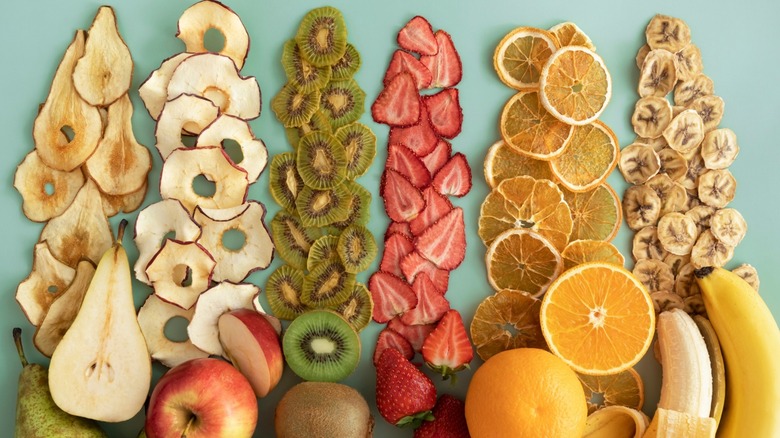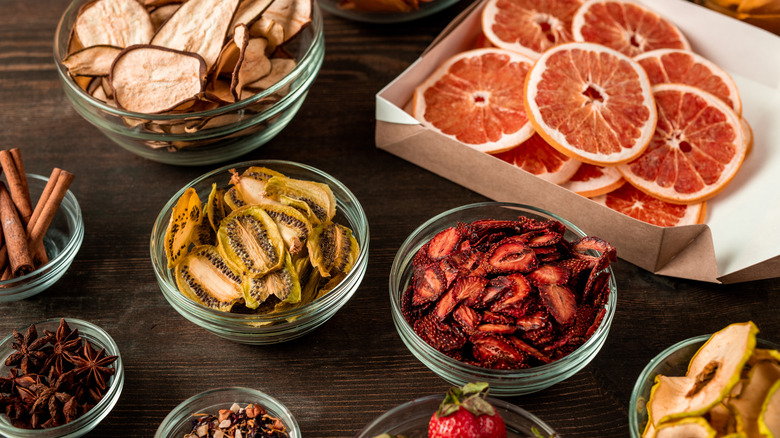The Mistake You Make When Drying Fruit Without A Dehydrator
If you are one of those folks who just can't help themselves when shopping at the local farmers market or grocery store and stock up on more fruit than they can handle, then dehydrating those tasty treats can be your saving grace. Instead of watching those fresh beauties go to waste, you can simply dry them into a healthy snack for hikes, long road trips, or any other time you feel the need to nosh. Although purchasing your own dehydrator can make quick work of the job, you may shudder at the idea of having yet another appliance take up space in your kitchen. Well don't fret, people have been successfully sucking the moisture out of fruits and veggies long before the invention of plug-in dehydrators, and you can too, in the comfort of your own kitchen.
This job can be done with your oven, toaster oven, or even by harnessing the drying power of the sun via open-air dehydration. However, there are some key components you need to keep in mind so you end up with the perfect results every time. Namely, the type of fruit you want to dry should dictate the method you use.
The best dehydrating process for certain fruits
Before choosing how you want to dehydrate your fruit, you need to look at the fruit itself. If you have fruit that holds a lot of moisture — such as peaches, apples, or pears — then you want to choose the oven-drying method, which can extract this moisture more quickly. Slice your fruit into small pieces of equal size and thickness, then lay them out on a rack over a pan. Set your oven to the lowest temperature possible and bake them for a few hours. Turn the oven off once the fruit is done, and leave the pan inside until the oven has cooled. The final product should be a deliciously dried-out treat that can be stored in a sealable container for when you're ready to snack.
If you have herbs or fruit with high sugar and acid levels — like rosemary, lemons, tomatoes, and figs — then these are perfect for air-drying. For this process, the ideal environment is hot, dry, and has sufficient airflow. Lay your items on a rack over a pan and place them either inside or outside depending on the conditions, placing a bit of cheesecloth or other meshy material over the top so flies and debris don't mess with your food. About a day later, you'll have perfectly dried fruit.

